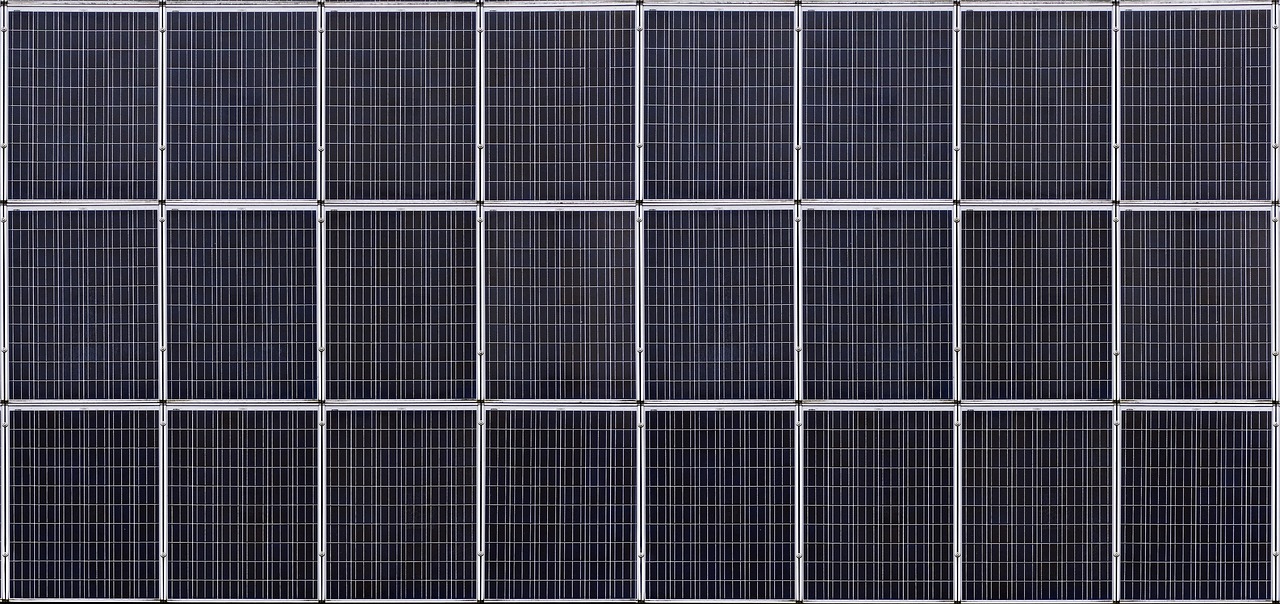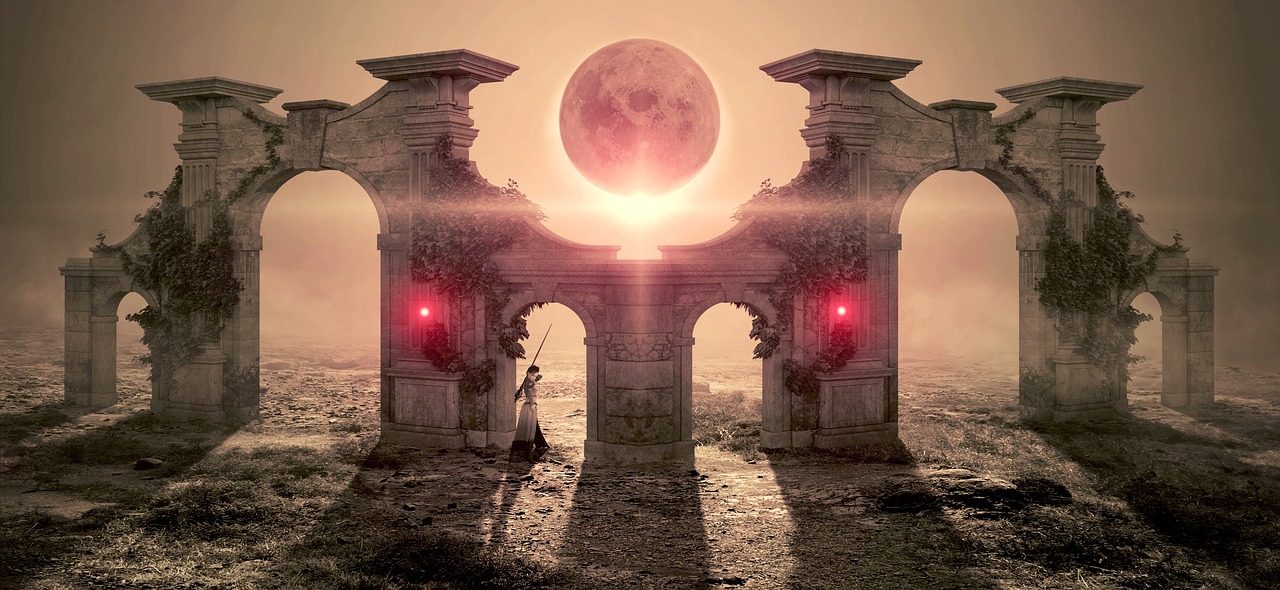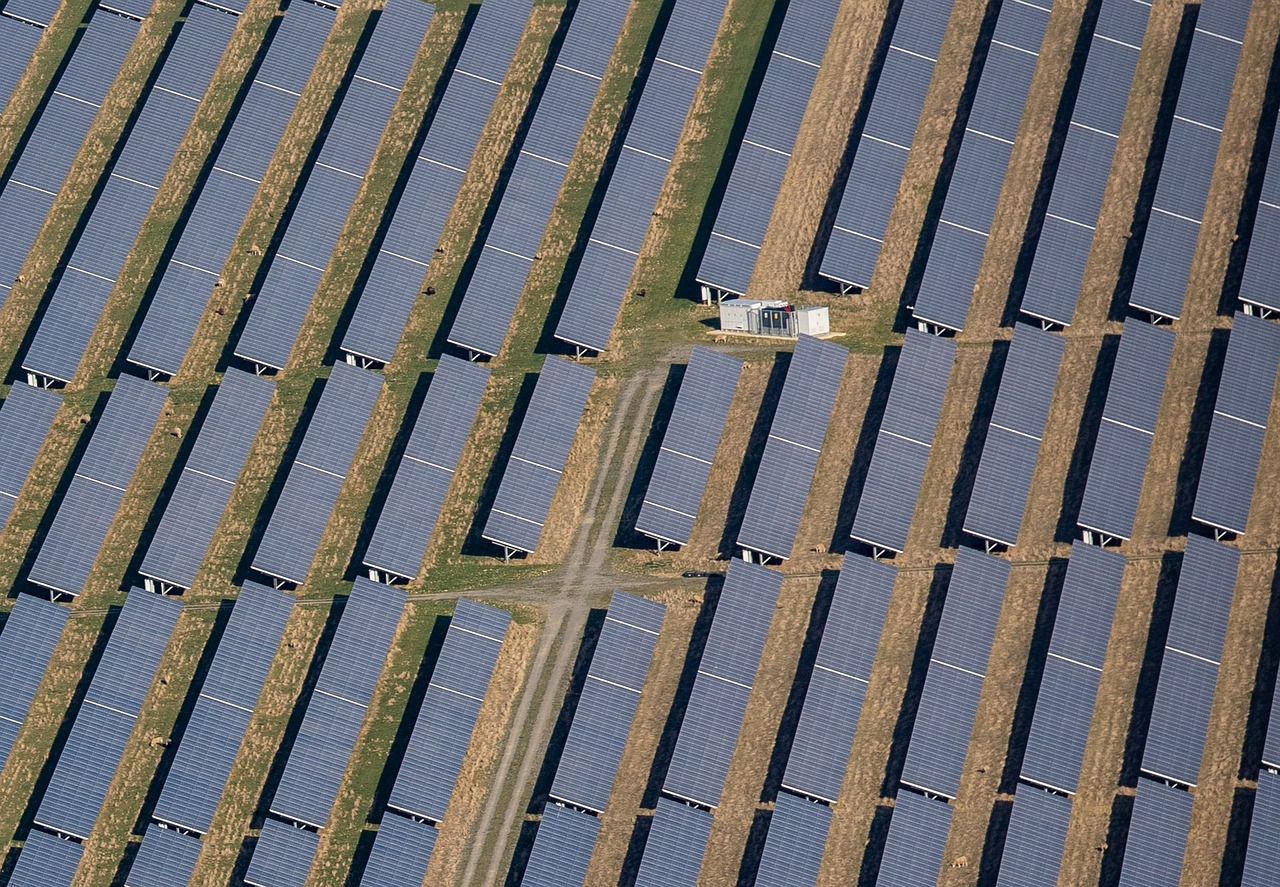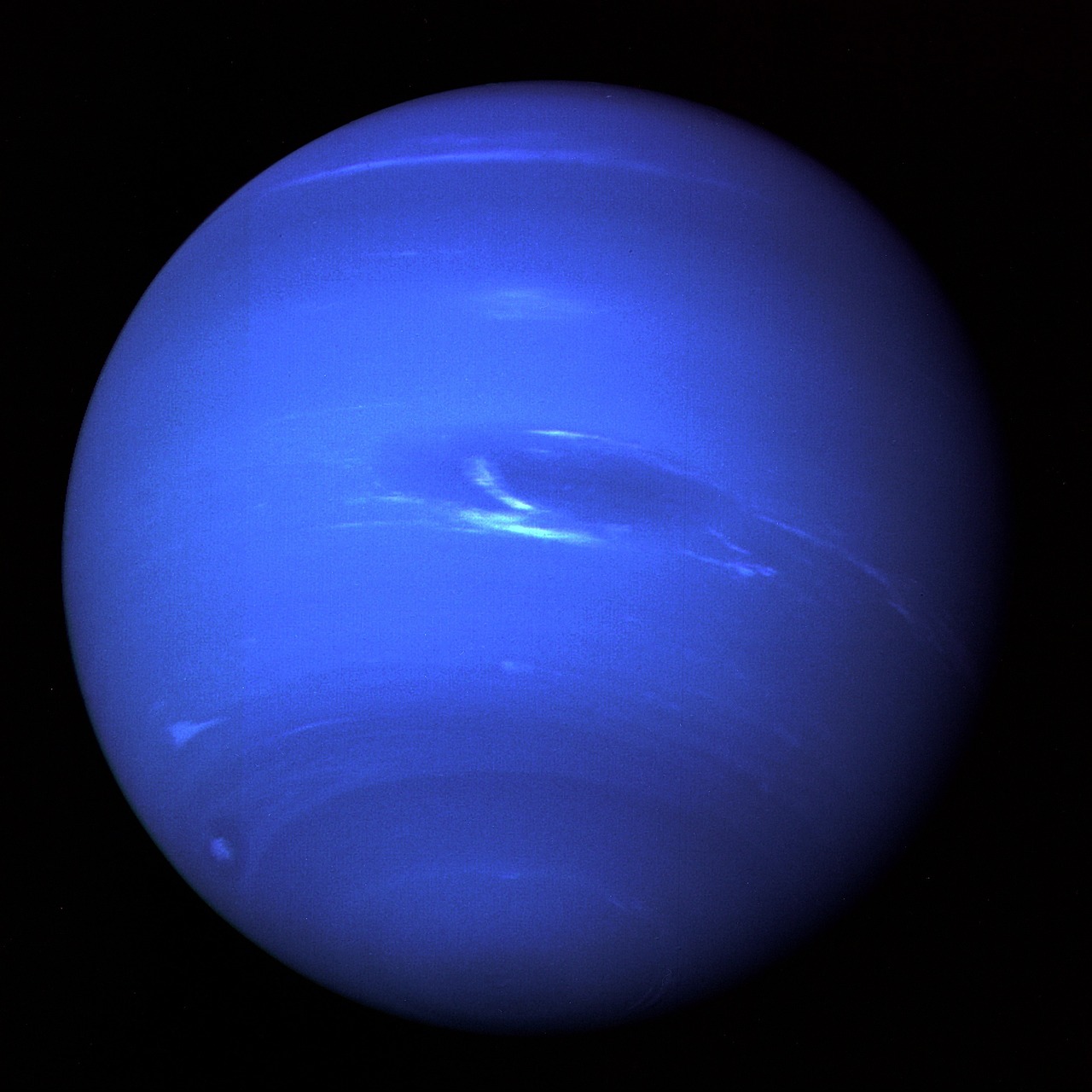Crafting Solar System Models: Space Learning for Kids
Have you ever gazed up at the night sky, wondering about the mysteries of the universe? The solar system, with its magnificent planets, dazzling stars, and intriguing celestial phenomena, is a treasure trove of knowledge waiting to be explored. For kids, learning about space can feel like embarking on an exciting adventure, one filled with wonder and discovery. One of the most effective ways to ignite this passion for space is through crafting solar system models. Not only does this hands-on approach make learning about our planetary neighbors more engaging, but it also allows children to unleash their creativity while grasping complex concepts in a fun and interactive way.
When children get involved in crafting their own solar system models, they don't just learn about the planets; they also develop essential skills such as critical thinking, problem-solving, and teamwork. Imagine the joy on their faces as they paint a vibrant Earth or glue together a colorful Saturn with its iconic rings! The process of creating these models provides a unique opportunity for kids to explore the scale, distance, and characteristics of each planet, transforming abstract ideas into tangible creations. It's like turning the vastness of space into a miniature world right in their own living room!
Moreover, crafting solar system models can be a collaborative project, bringing families together. Picture a weekend where parents and children gather around the dining table, surrounded by paints, cardboard, and a plethora of craft supplies. As they work together, they not only bond over their shared love for the cosmos but also engage in meaningful discussions about the planets, moons, and the science behind them. This collaborative effort fosters a sense of community and teamwork, making the learning experience even more enriching.
In this article, we'll dive deep into the benefits of hands-on learning, the materials needed for crafting solar system models, and step-by-step instructions to guide you through the process. Whether you're a parent looking to spark your child's interest in science or a teacher seeking innovative ways to teach astronomy, this guide is packed with ideas that will make your solar system project a blast!
Engaging children with hands-on projects fosters a deeper understanding and retention of knowledge. When kids are actively involved in creating something, they are more likely to remember the information associated with that activity. This is particularly true for complex concepts like the solar system. Instead of passively reading about planets in a textbook, they get to experience the joy of building and visualizing them. It's like turning a dry lesson into an exhilarating adventure!
Research has shown that children learn best when they can touch, see, and manipulate materials. The tactile experience of crafting a solar system model allows them to explore the relationships between the planets, their sizes, and their distances from the sun. Imagine a child learning that Jupiter is the largest planet while holding a model of it in their hands! This hands-on approach not only makes learning more accessible but also stimulates their imagination, encouraging them to ask questions and seek answers about the universe around them.
Creating solar system models can be as simple or as elaborate as you want it to be. The beauty of this project is that it can be tailored to fit your needs and resources. A variety of materials can be used, ranging from everyday household items to specialized craft supplies. This flexibility allows for creativity and resourcefulness in the crafting process. Here’s a quick overview of some materials you might consider:
| Material | Uses |
|---|---|
| Cardboard | Base for planets and the sun |
| Paints and Markers | Coloring planets and adding details |
| Styrofoam Balls | Creating 3D models of planets |
| String or Wire | Hanging models or creating orbits |
| Glue | Assembling different parts of the model |
Using recyclable materials not only promotes sustainability but also encourages children to think creatively about how to repurpose items into engaging solar system models. So, gather those old cardboard boxes, empty plastic bottles, and leftover craft supplies, and let the fun begin!
1. What age group is suitable for crafting solar system models?
Most children aged 5 and up can participate in crafting solar system models. Younger kids may need assistance, while older children can take on more complex tasks.
2. How long does it take to create a solar system model?
The time required can vary depending on the complexity of the model and the age of the children involved. Generally, it can take anywhere from a few hours to a couple of days.
3. Can we use digital tools for creating solar system models?
Absolutely! There are many digital platforms and apps that allow kids to create virtual solar systems. However, hands-on crafting provides a unique tactile experience that enhances learning.
4. How can we incorporate educational elements into the project?
Consider adding fun facts about each planet or incorporating a presentation element where kids can share what they've learned with family or classmates.

Benefits of Hands-On Learning
When it comes to learning, especially for kids, the traditional methods of sitting in a classroom and listening to lectures can often feel dull and uninspiring. That's where hands-on learning comes into play! This interactive approach allows children to actively engage with the material, making the process not just educational but also incredibly fun. Imagine a child, instead of just reading about the planets, actually crafting them with their own hands. This kind of involvement fosters a deeper understanding and retention of knowledge.
Engaging with physical materials helps children connect abstract concepts to tangible experiences. For instance, when they create a model of the solar system, they’re not just memorizing facts; they're experiencing the vast distances between planets, the unique characteristics of each celestial body, and the sheer wonder of space exploration. This process can be likened to building a bridge between the known and the unknown, allowing them to traverse the landscape of their imagination while solidifying their understanding of scientific principles.
Furthermore, hands-on activities stimulate various senses, which is crucial for young learners. They can see the colors of the planets, feel the textures of different materials, and even smell the paint as they work. This sensory engagement can lead to a more profound learning experience. Research shows that children are more likely to remember what they do rather than what they hear or see alone. Incorporating activities like crafting solar system models can significantly enhance their retention rates.
Additionally, hands-on learning encourages creativity and critical thinking. As children work on their models, they may encounter challenges—perhaps a planet keeps falling over, or the colors don’t match what they imagined. These obstacles require them to think critically and come up with solutions, fostering problem-solving skills that will benefit them in all areas of life. It’s like giving them a toolbox filled with skills they can use beyond just the classroom.
Moreover, this type of learning promotes collaboration and communication when done in groups. Kids can share ideas, help each other, and discuss their findings, which builds social skills and teamwork. Picture a group of children excitedly discussing which planet is the largest while they work together to create a model. This interaction not only enriches their experience but also strengthens their social bonds.
In conclusion, the benefits of hands-on learning are immense. It transforms the educational experience from a passive activity into an engaging adventure. By allowing children to explore, create, and collaborate, we’re not just teaching them about the solar system; we’re igniting a passion for learning that can last a lifetime.

Materials Needed for Solar System Models
Creating a solar system model can be an exciting adventure for kids, and the best part is that it can be done using a variety of materials. From items you might find lying around the house to craft supplies that can ignite creativity, the possibilities are endless. The beauty of this project lies in its flexibility; you can use recyclable materials, which not only encourages sustainability but also inspires kids to think outside the box. Imagine transforming an old cardboard box into a stunning representation of the solar system!
When it comes to materials, you’ll want to gather a mix that allows for both creativity and functionality. Here are some essential materials that can enhance the crafting experience:
- Cardboard and Paper: These versatile materials are perfect for shaping and painting planets. They can be easily cut into circles for planets or folded into shapes for spacecraft.
- Paints and Markers: Vibrant colors can bring the solar system to life. Kids can use paints to mimic the unique features of each planet, such as the swirling storms of Jupiter or the rings of Saturn.
- Glue and Tape: These are essential for assembling the model. Strong adhesive will help keep everything in place as kids construct their solar systems.
- String and Wire: These can be used to hang planets or create orbits, adding a dynamic element to the model.
- Beads or Balls: Different sizes can represent the various planets, helping children visualize the scale of our solar system.
By combining these materials, children can not only learn about the solar system but also develop their artistic skills. For instance, using paints and markers allows them to express their creativity while learning about each planet's unique characteristics. As they paint, they might discover that Mars is often called the "Red Planet" due to its reddish appearance, or that Neptune is a stunning shade of blue.
Incorporating recyclable materials into the project is an excellent way to teach kids about sustainability. They can repurpose items like plastic bottles or egg cartons, turning them into imaginative models. This not only reduces waste but also fosters a sense of resourcefulness. Imagine a child turning an old tennis ball into the sun, complete with a bright yellow paint job and a few sparkles for effect!
Ultimately, the materials used for crafting solar system models can significantly enhance the learning experience. By encouraging kids to gather supplies from around the house, you promote a sense of independence and creativity. So, gather your materials, roll up your sleeves, and get ready to embark on an out-of-this-world crafting journey!

Recyclable Materials
When it comes to crafting solar system models, are not just eco-friendly; they also ignite creativity and resourcefulness in children. By using items that would typically be discarded, kids can learn the importance of sustainability while having a blast creating their own miniature universe. Imagine transforming an old cardboard box into a spaceship or using plastic bottles to represent planets! The possibilities are endless, and the best part? It’s a great way to teach kids about the environment while they explore the wonders of space.
Common recyclable materials that can be used include:
- Cardboard: Perfect for creating the bases of planets or even the sun, cardboard is sturdy and easy to cut into various shapes.
- Plastic Bottles: These can be painted and repurposed as planets, with the added benefit of being lightweight and durable.
- Egg Cartons: An excellent choice for crafting smaller planets, egg cartons can be cut apart and painted to resemble the different celestial bodies.
- Old Magazines: Use pages to create colorful collages or to cut out images of planets and stars for decoration.
Utilizing these materials not only keeps costs down but also encourages children to think critically about how to repurpose everyday items. This hands-on approach helps them understand that creativity has no bounds and that even the simplest of materials can be transformed into something extraordinary. Plus, it’s a fantastic way to engage them in discussions about recycling and the environment, making the learning experience even richer.
So, gather those recyclables and let your child's imagination soar as they embark on their solar system crafting adventure. Who knows? They might just create a model that’s out of this world!
Q: What age group is suitable for crafting solar system models?
A: Children of all ages can participate, but younger kids may need more guidance while older kids can take on more complex projects independently.
Q: How long does it take to create a solar system model?
A: The time can vary based on the complexity of the model and the age of the child, but typically it can take anywhere from a few hours to a couple of days to complete.
Q: Can we use other materials besides recyclables?
A: Absolutely! While recyclable materials are a great option, you can also use craft supplies like foam balls, clay, or even 3D printing materials for a more polished look.
Q: How can we incorporate educational elements into the crafting process?
A: You can include fun facts about each planet, encourage kids to research their favorite celestial bodies, or even have them present their models to family and friends.

Cardboard and Paper
When it comes to crafting solar system models, are two of the most versatile materials you can use. They are not only readily available in most households, but they also allow for a wide range of creative possibilities. Imagine transforming a simple cardboard box into a magnificent representation of Saturn, complete with its stunning rings! With just a few cuts, folds, and a splash of paint, children can bring the universe to life right in their living rooms.
Using cardboard and paper encourages kids to engage their imaginations. For instance, they can create planets of different sizes and textures, mimicking the rocky surface of Mars or the gaseous layers of Jupiter. The tactile experience of cutting and assembling these materials can also enhance their fine motor skills. Plus, since cardboard is lightweight, it makes it easy for kids to manipulate their creations without frustration.
To get started, gather some materials. Here’s a quick list of what you might need:
- Cardboard boxes (cereal boxes, shipping boxes, etc.)
- Colored paper
- Scissors
- Glue or tape
- Paints or markers
Once you have your materials ready, the fun begins! Children can sketch their planets on cardboard, cut them out, and then decorate them with paints or colored paper. This not only makes the planets visually appealing but also helps them learn about the color and texture unique to each celestial body. For instance, they might use a sponging technique to create the swirling clouds of Venus or use glitter to represent the icy surface of Neptune.
Moreover, cardboard and paper are great for creating the orbits of the planets. By cutting strips of cardboard or using paper plates, children can illustrate the paths that planets take around the sun, giving them a better understanding of the solar system's structure. This hands-on approach to learning is incredibly effective; it makes abstract concepts tangible and easier to grasp.
In summary, cardboard and paper are not just materials; they are gateways to creativity and learning. By utilizing these common items, children can embark on an exciting journey through the solar system, all while developing their artistic skills and understanding of space. So, gather those old boxes and scrap paper, and let the crafting adventures begin!

Paints and Markers
This article explores creative ways to engage children in learning about the solar system through hands-on model crafting, enhancing their understanding of space while stimulating their imagination.
Engaging children with hands-on projects fosters deeper understanding and retention of knowledge, making complex concepts like the solar system more accessible and enjoyable for young learners.
A variety of materials can be used to create solar system models, ranging from everyday household items to specialized craft supplies, allowing for creativity and resourcefulness in the crafting process.
Using recyclable materials not only promotes sustainability but also encourages children to think creatively about how to repurpose items into engaging solar system models.
Cardboard and paper are versatile materials that can be easily shaped and painted, making them ideal for creating planets and other celestial bodies in solar system models.
When it comes to bringing solar system models to life, are essential tools that allow children to express their creativity while learning. The vibrant colors of paints can transform a simple cardboard planet into a striking representation of the real thing. For instance, using yellow and orange for the Sun can help children visualize its fiery nature, while blue and green for Earth can illustrate its lush landscapes and oceans.
Markers are equally important, especially for adding intricate details such as craters on the Moon or the rings of Saturn. The tactile experience of painting and drawing not only enhances motor skills but also encourages children to explore their artistic side. Moreover, the process of mixing colors can lead to exciting discoveries, such as how to create the perfect shade of red for Mars!
Here are some tips for using paints and markers effectively:
- Choose Non-Toxic Options: Always opt for non-toxic paints and markers to ensure safety for children.
- Experiment with Techniques: Encourage children to try different techniques such as sponge painting, splattering, or blending colors to create unique textures.
- Layering Colors: Teach kids about layering colors to achieve depth, especially when painting larger planets.
By incorporating paints and markers into their solar system models, children not only gain a deeper understanding of the planets' appearances but also develop a love for art and creativity. This dual focus on science and art makes the learning experience both fun and educational.
Exploring various crafting techniques allows children to experiment with different methods, encouraging creativity and problem-solving as they build their solar system models.
Breaking down the model creation process into manageable steps helps children follow along easily, ensuring they stay engaged and motivated throughout the project.
Planning is crucial for a successful solar system model; children should consider scale, distance, and arrangement to accurately represent the solar system's structure.
Assembling the planets involves careful attention to detail, allowing children to learn about the characteristics of each planet while constructing their models with pride.
Adding educational components, such as facts about each planet, enhances the learning experience, making the crafting project both informative and enjoyable for children.
Including fun facts and trivia about the solar system encourages curiosity and sparks discussions, making the crafting experience more enriching and interactive for kids.
Creating opportunities for interactive learning, such as presentations or group discussions, allows children to share their knowledge and foster a love for space exploration.
Q: What age group is suitable for solar system model crafting?
A: Solar system model crafting can be suitable for children aged 6 and above, with varying complexity based on age and skill level.
Q: What if I don't have art supplies?
A: You can use household items like old magazines, newspapers, or even food packaging to create colorful models.
Q: How long does it take to create a solar system model?
A: The time can vary based on the complexity of the model, but typically it can take anywhere from a few hours to a couple of days.

Crafting Techniques
This article explores creative ways to engage children in learning about the solar system through hands-on model crafting, enhancing their understanding of space while stimulating their imagination.
Engaging children with hands-on projects fosters deeper understanding and retention of knowledge, making complex concepts like the solar system more accessible and enjoyable for young learners.
A variety of materials can be used to create solar system models, ranging from everyday household items to specialized craft supplies, allowing for creativity and resourcefulness in the crafting process.
Using recyclable materials not only promotes sustainability but also encourages children to think creatively about how to repurpose items into engaging solar system models.
Cardboard and paper are versatile materials that can be easily shaped and painted, making them ideal for creating planets and other celestial bodies in solar system models.
Paints and markers add vibrant colors to models, helping children visualize the unique features of each planet while enhancing their artistic skills during the crafting process.
Exploring various crafting techniques allows children to experiment with different methods, encouraging creativity and problem-solving as they build their solar system models. One effective technique is the use of layering, where children can create depth in their models by stacking different materials. For example, they might use layers of paper mache to form the surface of a planet, giving it a more realistic texture and appearance. This method not only enhances the visual appeal but also teaches kids about the geological features of each planet.
Another exciting technique is the incorporation of movement. Children can create a model where planets rotate around the sun using simple mechanics like a spinning base or movable arms. This not only makes the project more dynamic but also helps them understand the concept of orbits and planetary motion. Additionally, using different textures can add an engaging tactile element to the models. For instance, they could use cotton balls for clouds on Earth or sandpaper for the rough surface of Mars. These hands-on experiences make learning about the solar system not just informative but also immensely fun.
In terms of tools, scissors, glue, and paints are essential, but don’t underestimate the power of everyday items. Items like straws can be used as connectors for the planets, while bottle caps can serve as bases. The possibilities are endless, and the more creative the approach, the more enthusiastic the kids will be about their projects.
Ultimately, the goal is to let children’s imaginations run wild while they learn. By encouraging them to explore different crafting techniques, you are not just helping them create a solar system model; you are also nurturing their curiosity and love for science.
Breaking down the model creation process into manageable steps helps children follow along easily, ensuring they stay engaged and motivated throughout the project.
Planning is crucial for a successful solar system model; children should consider scale, distance, and arrangement to accurately represent the solar system's structure.
Assembling the planets involves careful attention to detail, allowing children to learn about the characteristics of each planet while constructing their models with pride.
Adding educational components, such as facts about each planet, enhances the learning experience, making the crafting project both informative and enjoyable for children.
Including fun facts and trivia about the solar system encourages curiosity and sparks discussions, making the crafting experience more enriching and interactive for kids.
Creating opportunities for interactive learning, such as presentations or group discussions, allows children to share their knowledge and foster a love for space exploration.
Q: What age group is best suited for crafting solar system models?
A: Crafting solar system models is suitable for children aged 6 and up. Younger kids may need adult supervision and assistance.
Q: Can we use edible materials for the models?
A: Absolutely! Using edible materials like candies can make the project even more fun. Just ensure that the materials are safe and non-toxic.
Q: How long does it take to create a solar system model?
A: The time required can vary, but typically, it can take anywhere from a few hours to a couple of days, depending on the complexity of the model.
Q: Is it possible to incorporate technology into the project?
A: Yes! You can use apps or websites to create virtual models or even use augmented reality tools to enhance the learning experience.

Step-by-Step Model Creation
Creating a solar system model can be an exciting journey for kids, and breaking it down into manageable steps makes it even more enjoyable. The first step is to gather all the necessary materials. This includes items like cardboard, paper, paints, and even some recyclable materials. Once you have everything you need, it’s time to start planning your model. This is where the fun really begins! Encourage your kids to think about the scale of the planets and their distances from the sun. For instance, did you know that if the sun were the size of a basketball, Earth would be a tiny marble about 26 feet away? Understanding these proportions can help them visualize the vastness of space.
Next, it’s time to assemble the planets. This process should be as hands-on as possible. Kids can cut out circles from cardboard or paper to represent the different planets. As they create each planet, encourage them to think about its unique characteristics. For example, they can paint Mars red to represent its iron oxide surface or use a sponge to create Jupiter’s swirling storms. This not only teaches them about the planets but also allows them to express their creativity.
As they build their models, it’s helpful to keep a step-by-step checklist to ensure they don’t miss any important details. Here’s a simple format they can follow:
| Step | Action |
|---|---|
| 1 | Gather materials |
| 2 | Plan the model layout |
| 3 | Create the planets |
| 4 | Paint and decorate |
| 5 | Assemble the solar system |
Once the planets are crafted, it’s time to put them together in their correct order. You can use a long piece of string or a cardboard base to represent the sun at the center, with the planets arranged around it. This layout can be a great opportunity to discuss the order of the planets from the sun: Mercury, Venus, Earth, Mars, Jupiter, Saturn, Uranus, and Neptune. Not only does this help reinforce their learning, but it also creates a stunning visual representation of our solar system.
Lastly, don’t forget to incorporate educational elements into the project. Kids can write fun facts about each planet on small cards and attach them to their models. This not only makes the project more informative but also encourages them to share their newfound knowledge with family and friends. By the end of the project, they won’t just have a beautiful model to display; they’ll also have a deeper understanding of the solar system and a sense of accomplishment in their creative efforts.

Planning the Model
Planning your solar system model is like drawing a treasure map before you set out on an adventure. It’s essential to have a clear vision of what you want to create, and this involves several important considerations. First, think about the scale of your model. How big will each planet be compared to the others? This is crucial because the solar system spans vast distances, and understanding the relative sizes of planets can be a fun challenge. For instance, you might decide that a tennis ball represents Jupiter, while a marble could symbolize Mercury. This way, kids can grasp the concept of scale visually and tangibly.
Next, consider the distance between the planets. While it might be tempting to place them all close together for convenience, showing the actual distances can help children appreciate the vastness of space. You could use a long piece of string to represent the distance from the Sun to each planet, marking the planets along the string with small objects or drawings. This activity not only reinforces the idea of distance but also encourages children to think critically about spatial relationships.
Another important aspect of planning is the arrangement of the planets in your model. Should they be in a straight line, or perhaps in an orbit-like fashion? You can create a circular layout to mimic the orbits of the planets around the Sun, which can be quite visually appealing. Utilize a large base, like a cardboard circle, to represent the Sun in the center, and then arrange the planets around it. This setup can lead to fascinating discussions about how planets move and their orbital paths.
Finally, don’t forget to include some decorative elements that represent the unique features of each planet. For example, you might want to add rings around Saturn using strips of paper or create a textured surface for Mars using sandpaper. This not only makes the model more visually interesting but also allows children to express their creativity and learn about the distinctive characteristics of each celestial body.
By taking the time to plan your solar system model carefully, you're setting the stage for an engaging and educational experience. The process of planning will help children connect more deeply with the material, making the project both fun and informative. Remember, the goal is to foster a love for learning about space while allowing their imaginations to soar!

Assembling the Planets
Assembling the planets is an exciting part of creating your solar system model, and it’s where the magic truly happens! Imagine each planet as a unique character in a grand cosmic play, each with its own story to tell. As children dive into this hands-on activity, they not only learn about the physical characteristics of each planet but also develop a sense of pride in their creations. To start, gather all the materials you’ve prepared, and let’s get ready to bring the universe to life!
First, it’s essential to understand the scale and distance between the planets. While it’s tempting to create a model that’s visually appealing, keeping the relative sizes and distances in mind will make the project educational. For instance, the massive Jupiter should be significantly larger than tiny Mercury. This is where a bit of planning comes into play. Use the following guide to help visualize the sizes of the planets:
| Planet | Diameter (km) | Relative Size |
|---|---|---|
| Mercury | 4,880 | Smallest |
| Venus | 12,104 | Similar to Earth |
| Earth | 12,742 | Standard |
| Mars | 6,779 | Smaller than Earth |
| Jupiter | 139,820 | Largest |
| Saturn | 116,460 | Second Largest |
| Uranus | 50,724 | Ice Giant |
| Neptune | 49,244 | Similar to Uranus |
Once you’ve got a grasp on the sizes, it’s time to start assembling! Begin with the largest planet, Jupiter, as your centerpiece. This not only makes it easier to arrange the other planets around it but also creates a stunning focal point. Use materials like large balls or crumpled paper for the planets, and don’t forget to paint them according to their unique features. For example, Jupiter’s swirling storms can be represented with shades of orange, red, and brown, while Saturn’s iconic rings can be crafted from cardboard or paper plates painted in gold or yellow.
As you assemble each planet, encourage children to share what they’ve learned about them. For instance, while working on Mars, they can talk about its reddish color and the presence of iron oxide on its surface. This not only reinforces their knowledge but also makes the crafting process interactive and engaging. You might even want to create a small display card for each planet, highlighting fun facts or trivia. This way, when the model is complete, it becomes an educational tool as well!
Don't forget to add details like moons and asteroids! These smaller celestial bodies can be made from beads, small balls, or even crumpled paper, providing an opportunity for creativity. As children add these elements, they learn about the diverse components of our solar system and how they interact with the planets. This step is not just about assembling but also about storytelling—each addition brings a new layer to their understanding of the cosmos.
Finally, once all the planets are assembled, take a moment to admire the collective effort. Encourage children to present their models to family or friends, explaining what they learned about each planet. This not only boosts their confidence but also solidifies their understanding of the solar system. Remember, the journey of assembling the planets is just as important as the final product, fostering a love for learning and exploration that lasts a lifetime!
- What materials can I use to create solar system models? You can use a variety of materials such as cardboard, paper, paints, and even recyclable items like plastic bottles and caps!
- How can I make my model more educational? Include fun facts and trivia about each planet, and consider creating a presentation or discussion opportunity for children to share their knowledge.
- Is there a specific order in which to assemble the planets? While assembling, it's helpful to start with the largest planet, Jupiter, and then arrange the others based on their size and distance from the sun.

Incorporating Educational Elements
When it comes to crafting solar system models, integrating educational elements can transform a fun project into a rich learning experience. One of the most effective ways to do this is by incorporating interesting facts and trivia about each planet. Imagine your child proudly pointing to their colorful model of Jupiter and sharing that it is the largest planet in our solar system, or explaining how Saturn's rings are made up of ice and rock particles. This not only enhances their knowledge but also boosts their confidence as they become little experts on the solar system!
Additionally, you can create a small booklet or poster that accompanies the model, featuring educational content such as:
- Planetary Characteristics: Size, distance from the sun, atmosphere composition, and surface conditions.
- Historical Facts: Discoveries related to each planet, including missions that have explored them.
- Fun Trivia: Quirky facts that can spark curiosity, like how Venus rotates backward compared to other planets.
Moreover, consider incorporating interactive learning opportunities into the project. For instance, after completing their models, children can present their work to family members or friends. This not only reinforces what they've learned but also develops their public speaking skills. You might set up a mini-exhibition at home where each child can explain their model and share their favorite planet facts. This kind of engagement fosters a love for space exploration and encourages teamwork and collaboration among peers, making the entire experience even more enriching.
In summary, by embedding educational components into the crafting process, you create a multifaceted learning experience that goes beyond mere model-making. Children not only get to express their creativity but also deepen their understanding of the universe. So, gather those materials, and let the learning adventure begin!
Q: What age group is best suited for crafting solar system models?
A: Generally, children aged 6-12 years old are ideal for this activity, as they can grasp the concepts of the solar system while enjoying the hands-on experience.
Q: Can this project be done alone, or is it better with a group?
A: While children can certainly work on their models independently, involving friends or family can enhance the experience through collaboration and shared learning.
Q: What if we don't have all the materials listed?
A: No worries! Get creative with what you have at home. Many household items can be repurposed for this project, promoting resourcefulness and sustainability.
Q: How can I ensure my child retains what they learn?
A: Encourage discussions about their models and the facts they've learned. Asking questions and engaging in conversations will help reinforce their knowledge.

Fun Facts and Trivia
When it comes to the solar system, there’s no shortage of fascinating facts that can ignite a child's curiosity! Did you know that Jupiter is so large that it could fit all the other planets inside it? Or that Venus is the hottest planet, even though Mercury is closer to the Sun? These intriguing details not only make learning fun but also help children appreciate the vastness and complexity of our universe.
Incorporating these fun facts into your solar system model project can transform a simple craft into an engaging educational experience. For instance, while crafting the planets, you can share interesting trivia such as:
- Saturn's Rings: Did you know Saturn's rings are made up of ice and rock particles? They are so wide that they could stretch across the entire distance from Earth to the Moon!
- Neptune's Winds: Neptune boasts the strongest winds in the solar system, reaching speeds of over 1,200 miles per hour. That's faster than a speeding bullet!
- Earth's Unique Features: Earth is the only planet known to support life, thanks to its perfect distance from the Sun and the presence of water.
These nuggets of information can be placed around the model or even written on small cards that accompany each planet. This not only makes the project visually appealing but also serves as a great conversation starter. Encourage kids to share what they learn with family and friends, making the crafting experience interactive and social.
Moreover, you can create a mini trivia game as part of the project! Ask questions like:
- Which planet is known as the "Red Planet"?
- How many moons does Mars have?
- What is the largest volcano in the solar system, and on which planet is it located?
Such activities not only reinforce their knowledge but also create a fun learning environment. By blending creativity with education, children will develop a deeper understanding of space while having a blast crafting their solar system models!
Q: What age group is best suited for solar system model crafting?
A: Solar system model crafting can be enjoyed by children of various ages, but it is particularly engaging for kids aged 6 to 12. Adjust the complexity of the project based on their age and skill level.
Q: How long does it typically take to complete a solar system model?
A: Depending on the complexity and detail of the model, it can take anywhere from a few hours to several days. It's best to break the project into manageable sessions to keep kids engaged and avoid frustration.
Q: Can we use materials other than those listed?
A: Absolutely! Feel free to get creative and use any materials you have at home. The goal is to encourage creativity and resourcefulness, so let your imagination run wild!
Q: How can I incorporate more educational elements into the project?
A: You can add facts about each planet, create a presentation for family members, or even organize a "planetarium night" where kids can showcase their models and share what they've learned about the solar system.

Interactive Learning Opportunities
Creating opportunities for interactive learning is a fantastic way to deepen children's understanding of the solar system while making the crafting process even more enjoyable. When kids engage with their peers in discussions or presentations about their solar system models, they not only share their creativity but also reinforce their knowledge. Imagine a classroom buzzing with excitement as each child takes turns showcasing their models, explaining the unique characteristics of their planets, and answering questions from their classmates. This kind of interaction fosters a sense of community and collaboration, essential elements in the learning process.
One effective method to encourage interactive learning is to organize a solar system exhibition where children can display their models. This event can be structured like a science fair, allowing each child to present their work to parents, teachers, and fellow students. They can explain how they created their models, share interesting facts they discovered, and even engage the audience with questions. This not only boosts their confidence but also enhances their public speaking skills.
Additionally, incorporating group discussions can spark curiosity and promote critical thinking. For instance, after completing their models, children can gather in small groups to discuss what they learned about the solar system. Questions like “Which planet do you think is the most interesting and why?” or “How do you think the size of the planets affects their gravity?” can lead to lively debates and deeper understanding. These discussions can be enriched by a
| Planet | Size (Diameter in km) | Distance from Sun (Million km) | Surface Condition |
|---|---|---|---|
| Mercury | 4,880 | 57.91 | Rocky, very hot |
| Venus | 12,104 | 108.2 | Rocky, thick atmosphere |
| Earth | 12,742 | 149.6 | Rocky, life-sustaining |
| Mars | 6,779 | 227.9 | Rocky, cold |
| Jupiter | 139,820 | 778.5 | Gas giant, stormy |
| Saturn | 116,460 | 1,429 | Gas giant, ringed |
| Uranus | 50,724 | 2,871 | Ice giant, tilted axis |
| Neptune | 49,244 | 4,495 | Ice giant, windy |
By integrating these interactive elements into the crafting project, children not only learn about the solar system but also develop essential skills such as teamwork, communication, and critical thinking. The excitement of sharing their models and discussing their findings can ignite a lifelong passion for space exploration. So, why not turn your next solar system model-making project into a collaborative adventure? The universe is waiting to be discovered!
Q: What age group is suitable for solar system model crafting?
A: Solar system model crafting can be suitable for children aged 5 and up, with varying complexity based on age. Younger children may need assistance, while older kids can take on more challenging projects.
Q: What are some easy materials to start with?
A: Common household items like cardboard, paper, paint, and even old toys can be repurposed into fantastic solar system models. You can also use balls of different sizes to represent planets.
Q: How can I make this project more educational?
A: Encourage kids to research fun facts about each planet and present them during the exhibition. You can also include comparisons, like the size of planets or their distance from the sun, to create a more comprehensive learning experience.
Frequently Asked Questions
- What materials do I need to create a solar system model?
You can use a variety of materials for crafting your solar system model! Everyday items like cardboard, paper, and plastic bottles work great. Don’t forget paints and markers to bring your planets to life with vibrant colors. The best part? You can even use recyclable materials, which adds a fun twist to your project!
- How can hands-on learning benefit my child?
Hands-on learning is like giving your child a treasure map to knowledge! It helps them grasp complex concepts, like the solar system, in a way that sticks. When kids create something with their own hands, they’re more likely to remember what they've learned. Plus, it’s a super fun way to spark their imagination and creativity!
- Can I incorporate educational elements into the crafting process?
Absolutely! Adding educational components like fun facts and trivia about each planet can make the crafting experience even more enriching. You can encourage your child to research interesting tidbits about the solar system, turning the project into a mini science lesson. This way, they not only build a model but also learn fascinating information that they can share with others!
- What are some fun ways to present the solar system model?
Presenting the solar system model can be a blast! You could organize a mini exhibition at home or even a presentation for family and friends. Encourage your child to explain each planet's unique characteristics, share the fun facts they discovered, and maybe even create a little interactive quiz for their audience. This not only boosts their confidence but also deepens their understanding of the solar system!
- How do I ensure my child stays engaged throughout the project?
Keeping your child engaged can be as simple as breaking down the project into manageable steps. Encourage them to take ownership of their model by letting them choose colors, materials, and even the arrangement of the planets. Regularly check in with them, ask questions, and celebrate their progress. Making it a collaborative effort will keep the excitement alive!



















